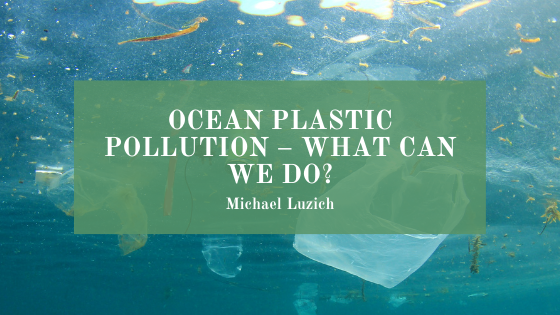The world is slowly recognizing plastic pollution as one of the most severe threats to ocean health worldwide. Unprecedented and continuous plastic production combined with low recycling levels and poor waste management results in at least 8 million tons of plastic ending up in the ocean every year.
In the ocean, plastic pollution impacts countless marine species and habitats through entanglement, toxicological effects via ingestion, suffocation and starvation. Unfortunately for us and these species and habitats, “plastics are forever.”
Where does Plastic Pollution Originate?
The majority of plastic pollution originates from human activities along coastlines and inland.
Garbage patches are large ocean areas where single-use plastics, fishing gear, garbage, and other marine debris collects. These patches form through the action of large, rotating ocean currents called gyres that pull debris into one location.
The debris making up garbage patches stretches from the ocean’s surface to the ocean floor.
So, How to Reduce the use of Single-Use Plastics
Single-use plastics include plastic shopping bags, water bottles, straws, cups, utensils and take-out containers: any plastic items we use once and then discard.
The Guardian recently reported divers had found what they described as “COVID waste” – dozens of gloves, masks and hand sanitizer bottles beneath the Mediterranean that had not been recycled or disposed of correctly. This find is the promise of a new source of plastic pollution for the oceans.
The most successful way to reduce the use of single-use plastics is to think ahead and be prepared. Purchase and carry with you reusable versions of the above items, including metal straws, reusable shopping bags, metal bottles and utensils. When you don’t require a business’s single-use plastic items, you’re demonstrating an attitude change among consumers that businesses should pay attention to: alternatives need to be made available for other patrons.
Recycle Correctly
When you have no option but to use single-use plastic items, be sure to recycle the ones that can be recycled responsibly. Presently, 3 million tons—just 8.7% of plastic—are recycled worldwide. Recycling helps keep plastics out of the ocean and reduces the amount of plastics in circulation.
Take this opportunity to check that your company or organization is recycling to the best of its ability.
Support Organizations Addressing Plastic Pollution
Many non-profit organizations work to reduce and eliminate ocean plastic pollution; we can support them by donating to or volunteering with them. Here are a few of these organizations:
- Precious Plastic: one of the most original and engaging ways of handling plastic waste.
- Plastic Pollution Coalition: raises awareness around the threat that single-use, disposable plastic poses to the planet.
- Clean Ocean Project: raise awareness around the pollution of oceans by organizing beach cleanups and encouraging the avoidance of single-use plastics.
- The Ocean Cleanup: the most extensive ocean cleanup in history, extracting and intercepting plastic waste in the seas.
As you can see from the above points, plastic pollution within our ocean is a serious concern. But, there are actions that we can all take to make a difference and reduce our plastic pollution footprint.
Plastics may be forever, but plastic pollution doesn’t have to be.

